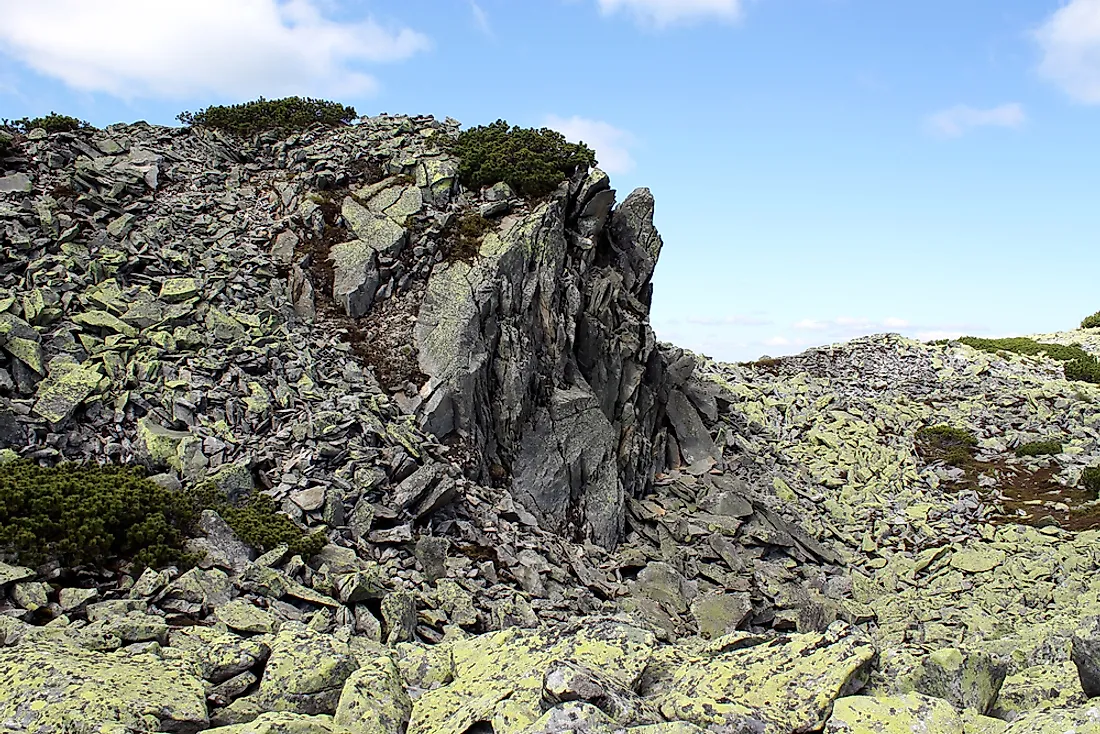What Is A Scree?

What Is A Scree?
The term scree refers to an accumulation of pieces of broken rock. These rocks have come loose from surrounding cliffs and mountainsides during rockfalls. After rolling, bouncing, and sliding down nearly vertical cliffs, these rocks come to rest in one concentrated heap. Generally speaking, scree is most commonly found at the foot of volcanoes, valleys, mountain cliffs, and crags.
How Does Scree Form?
As previously mentioned, scree is formed as the result of rockfall. Rockfall is prompted by several factors, including erosion. This erosion is further caused by weathering, both from climate and chemical causes. The different types of weathering that cause rockfall and the resulting scree include: thermal stress, biotic processes, chemical weathering, mechanical weathering, and topographic stress.
Thermal stress refers to unequal temperatures found within and without a particular structure. Materials, like rocks, can expand or contract with varying temperatures. This movement leads to cracking in cliffsides, which loosens pieces of rock that fall below.
Biotic processes refers to weathering caused by living organisms. One example of this occurs when plants grow into the cracks located between rocks on cliffs. As the plant roots continue growing and expanding, they cause the cracks to grow larger. This expansion results in falling rocks, which collect as scree.
Chemical weathering is the result of chemical reactions between water and minerals in rocks that weaken the composition of the cliff. As with the previously mentioned types of weathering, the weakness caused by chemical weathering contributes to cracking in the rock.
Mechanical weathering is similar to chemical weathering, but is caused by interactions between ice and heat. As ice forms in cliff cracks, it expands and breaks off pieces of rock.
Finally, topographic stress, also known as mass movement, is caused by gravity. The gravity drags heavy, loose items down to lower elevations.
Effects Of Scree On The Ecosystem
As scree accumulation grows at the bottom of mountains and cliffs, it can affect the ecosystem around it by preventing large plants from taking hold and growing. In areas with high scree concentration, only small herbs and grasses are able to thrive. Generally, these plants die in the spring and fall, when rockfall is more common, due to extreme changes in temperature which leads to the freezing and thawing of water in the cracks of cliffs.
Screes Around The World
One of the most well-known collections of scree can be on top of the glacier, which is located in the area of the Lech dl Dragon lake in South Tyrol of Italy. When the glacier, which is completely covered by scree, begins to melt in the warmer temperatures, the lake is created.
A mountain slope full of scree can also be found at the South Island mountains of New Zealand. Here, mountain climbers can slide down the side of the mountain, making use of the loose rocks.
Scree can be found in most areas of the world. It presents a particular challenge to hikers and mountain climbers. The loose material makes it difficult for these individuals to gain their footing. One unsteady footstep could push the scree into an unexpected cascade due to its unstable positioning. The larger the rocks, the more dangerous it is to hikers as it poses the threat of broken bones.











